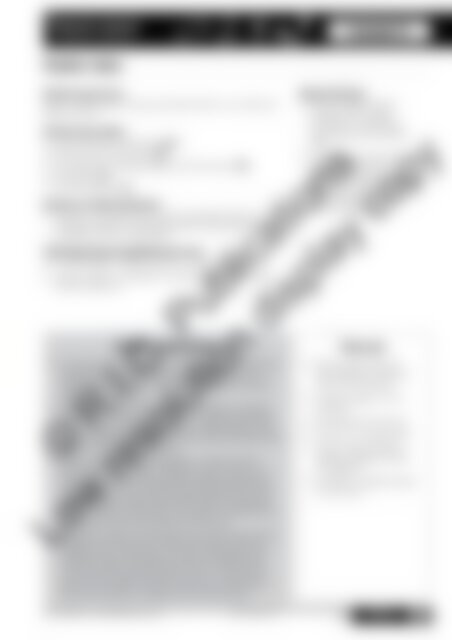6172RB Science a STEM approach Year 2 low res watermark
You also want an ePaper? Increase the reach of your titles
YUMPU automatically turns print PDFs into web optimized ePapers that Google loves.
Physical sciences<br />
FORCED TO MOVE<br />
Lesson 5<br />
Teacher notes<br />
<strong>Science</strong> inquiry focus:<br />
Why do objects fall to the ground when there is no surface for<br />
them to sit on?<br />
<strong>Science</strong> Inquiry Skills:<br />
• Questioning and predicting QP<br />
• Planning and conducting PC<br />
• Processing and analysing data and information PA<br />
• Evaluating E<br />
• Communicating C<br />
<strong>Science</strong> as a Human Endeavour:<br />
• Students investigate and explore how gravity works on<br />
everyday objects, including themselves, by pulling them<br />
towards the centre of the Earth.<br />
Technology/Engineering/Mathematics links:<br />
• using an iPad® or digital camera to record a video<br />
• using an iPad® or computer to email a digital video to the<br />
teacher (optional)<br />
Background information<br />
• Through careful observation and testing, Sir Isaac Newton<br />
discovered an invisible force (gravity) that acts on all<br />
objects with mass. It is a force that pulls objects towards<br />
the centre of the Earth.<br />
• The amount of gravitational pull on an object is directly<br />
relational to the mass of the object. A heavier object will<br />
have a larger gravitational pull than a light object. At this<br />
age it is sufficient for students to know that all objects with<br />
mass are acted upon by gravity.<br />
• When completing the investigation, students should<br />
discover that regardless of whether a push, a pull or no<br />
force was applied to the beanbag initially, the beanbag<br />
fell to the floor. This is because a gravitational force is at<br />
work, pulling the object towards the centre of the Earth.<br />
When a surface is removed or the object is released from<br />
a hold, gravity pulls the object to the ground.<br />
• The path an object travels depends on the forces at work.<br />
If gravity is the only force at work, the object will travel<br />
straight down to the ground. If a force is applied to the<br />
side of an object, the object will travel in that direction<br />
until the force of gravity is able to move it closer to the<br />
ground. If an object is thrown into the air, it will travel in<br />
the same direction until gravity pulls it back down.<br />
Assessment focus:<br />
• Use completed copies<br />
of page 131 to assess<br />
the student’s predicting,<br />
observing and recording<br />
skills.<br />
• Use students’ self-created<br />
videos to assess their<br />
knowledge of gravity and how<br />
it works on objects that have<br />
been pushed or pulled in<br />
different directions.<br />
Resources<br />
• Online video about Sir<br />
Isaac Newton at <br />
• A copy of page 131 for<br />
each pair<br />
• A beanbag for each pair<br />
• Access to a cleared table<br />
• Online video—Defining<br />
gravity at <br />
• An iPad® or digital camera<br />
for each pair<br />
© R.I.C. Publications<br />
Low <strong>res</strong>olution display copy<br />
R.I.C. Publications® – www.ricpublications.com.au 978-1-925431-95-7 YEAR <strong>Science</strong>:<br />
2 A <strong>STEM</strong> APPROACH 129


















